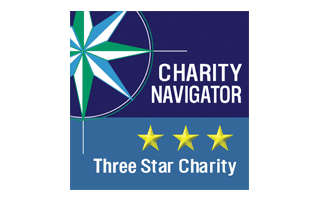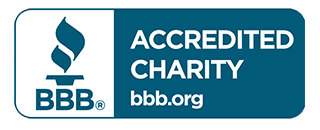Co-authored and published by Michele Brown, Nancy Burke, Jasmine Khan, and Dr. Richard Mandsager on November 2, 2018.
Anchored Home is Anchorage’s three-year plan to solve homelessness, and we’ve never tried anything like this before.
Anchorage has had task forces, community plans, summits, forums and initiatives reaching back decades. And as you’re reading this, good people are at work helping some of our neighbors living through homelessness with housing, treatment and job training.
We’re not starting from scratch. Anchored Home’s scale, unity, collaboration and realism are the new elements the community is committing to. We know we will not end homelessness in Anchorage by 2021. But we can do better. We can achieve functional zero.
Functional zero means that we have the wherewithal to swiftly house and support anyone who needs that help. In market terms, it’s supply equals demand, without a long wait.
That’s what we aim to build in Anchorage. Reach functional zero and we will have a city in which homelessness is mostly a rare, brief and one-time experience. We don’t want those words to be a rote slogan, but a description of reality. And we mean for that reality to have range, from families who need just a little hand up to that afflicted neighbor most of us cross the street to avoid, but who needs our help for keeps.
This goal requires a vertical climb that would give a fighter pilot pause.
But we have the most important element to make that climb – determined people with a strong sense of mission and the will to pull together. If you check out the Anchored Home plan, on the first page, you’ll see a list of 68 participating groups. Some of those groups bring a wealth of experience in finding housing and help. Anchored Home doesn’t aim to change what they do, but to provide the means to do more with a level of coordination and cooperation that puts our neighbors experiencing homelessness first.
To that end, Anchored Home is based on four pillars, led by people already committed to working together: prevention and diversion, the housing and support system, public health and safety, advocacy and funding.
We’ll all do what needs to be done – from the accounting work of data collection and data sharing to the field work of reaching out to people through barriers of trauma past and present, substance abuse, mental illness and fear. We aim to better understand the scope of the problem in numbers, but always remember each person is more than a number, each person has a name. We’ll know their names. We will know each person’s story and seek to learn what we can do better to prevent similar stories. And we’ll tailor help to their needs, whether to get them to emergency shelter if they’re on the street or to keep them off the street through pre-emptive services like United Way’s 2-1-1 Helpline.
We’ll continue to see and hear our neighbors who live both in and near homeless camps – and live with their hazards. We understand their anger and frustration. Work to clean up camps, within the limits of the law and with respect for the rights of those who live there, will go on. We neither promise nor can we deliver overnight change. But we’ll do our best to mitigate camp hazards to health and safety – both for vulnerable campers and their neighbors.
We’ll continue to look for new funding sources and methods, like the Pay for Success model that relies on private and nonprofit investors and only taps public funds for specific, proven and delivered outcomes. We’ll track Path to Independence, a pilot partnership of private landlords, housing authorities, service providers and funders to help up to 40 newly homeless individuals and families quickly get back on their feet.
We have a plan. But we don’t claim to have all the answers. While we know that the housing-first principle works, we also know that its application isn’t one size fits all. We understand that the level of collaboration required to resolve homelessness on this scale will be a first. We can draw on the experiences of cities like Denver and Boston, where people joined hands in similar ambitious projects; much of the work we’ve done already is based on successful work elsewhere.
Even better, we can take heart in the recent success we’ve had in housing families –and in the functional zero already achieved in emergency winter shelter for families with children. Eleven churches have united to make sure this will be the seventh straight winter in which no child in Anchorage need sleep in a cold car or worse, even when year-round shelters are full. We believe that this is an example of how Anchored Home should operate – a community effort to benefit all of us.
We’ll learn and refine as we go. In crafting this plan, we’ve sought and received help in public forums, community councils, from social service providers, business and industry groups, nonprofits and homeless persons – all told, more than 700 people. We’ll keep in touch with people across the city affected by homelessness, not least those who are living it. You can check out scheduled future public events at the websites of the Anchorage Coalition to End Homelessness and the municipality.
Anchored Home is based on four pillars, but its real foundation is the deep reservoir of good will in the Anchorage community.






joe melican says
This plan will work! It is a THREE STAGE Plan. Stage ONE is akin to a United Nations Style TENT CITY that is a covered Dome (Like the Sports Dome in Anchorage) so as to not be a public eye sore. The Homeless can drink use drugs whatever they want inside! Showers, Bathrooms and one meal a aday will be provided. Mental Health Professionals will also be available to get people back on their meds if they need it. Societal Norms will take over and any trouble makers will be kicked out. The idea for Stage One is to keep people ALIVE and Mental Health Assessments. STAGE TWO: will be like a Costco Type Warehouse which will have Bunk Beds/Barracks type living. NO Drugs and NO Drinking is allowed onsite. To be able to move into Stage TWO you must be working within 30 days of arrival. Mental Health Professionals, Showers and Toilets onsite, Recreation Room and TV’s, Computers with Internet etc onsite. Basically this is geared to people who are willing to go to Work and rejoin society. If a person wants to go to Work and stop off and have some beers on his way home NO PROBLEM, Just NO DRINKING ONSITE!! This is NOT FORCED Alcoholic Anonymous. This is meant to be a helping hand to rejoin society. Most people will go from Stage ONE to Stage TWO then move out to their own apartment. Some will stay indefinitely as long as they Work and are a Positive Influence to the Environment NO PROBLEM! Sliding Scale Rent Will be charged depending on Income. $300 to $500 per mth. STAGE THREE: Sober Living Apartments. Two people per Bedroom (2 Bedroom Apartment would have FOUR people Obviously) This is a DRUG and ALCOHOL FREE environment!! IF people cannot stay Drug and Alcohol Free then they Stay in Sage TWO. Stage Three is geared for People who just cannot seem to get a “Good Enough’ Job to afford their own apartment but they want to stay Drug and Alcohol Free. Rent will be charged at this location $500-$600 Per person per month! The apartments will be Fully Furnished including Computers and Cable. Stage Three People can be on SSI and NOT working however they must volunteer 20-30 hours a week someplace. AA Meetings are Mandatory 4 times a week and other Recovery Type Events will be occurring. Mental Health Professionals will be visiting on a regular Basis. IN SUMMARY: Stage One: Tent City in a Dome, Drink do Drugs who cares. Stay Alive! Mental Health Professionals will be available to help! Stage TWO: Warehouse/Barracks Living. No Drugs or Alcohol on site. Must be working and pay Rent! IF you want to have a beer on the way home from work WHO CARES! Just No Drinking onsite. Ideally most people will move into their own apartments once they get steady employment. Stage Three: SOBER LIVING APARTMENTS: Drug and Alcohol Free environment Must be working or on SSI and Rent is $500-$600 Per month. This is geared for people who are not able to get a job that pays enough to rent their own apartment. It is also geared for people who need support in staying Drug and Alcohol Free! :) simple stuff!! This will work, it will keep people alive and ideally Mental Health Professionals will be available to help those who need it!
joe melican says
UNITED WAY of Anchorage feel Free to share my plan with the entire Country. The Goal of the plan i outlined above is multi faceted. Homeless are an eyesore we all know that. Stage One: will help get them off the street into a safe environment in which they can shower, clean their clothes the use the Bathroom sleep in a tent stay warm, eat one meal a day and meet with a Mental Health Professional on a regular basis. Societal Norms will keep the peace. Any Troublemakers will be expelled. This place will NOT be paradise but it is better then dying behind a dumpster. YES Drinking will be allowed drugs will be NOT allowed but NOT heavily monitored. Each City will know what do do about these issues. The Goal is to keep people ALIVE! Stage Two: Find a Job, Pay Minimal Rent much better living arrangements, Bunk Bed/Barrack Style livings arrangements with maybe 16-20 people per barrack (100-200 People Per Facility but sectioned off into Barracks). TV, Computers Internet and Recreation Available. NO DRUGS AND NO ALCOHOL allowed onsite. If a person has a job and has a beer on the way home or has 8 beers who cares! Go to Work, Pay your Rent, Do not cause Problems! Ideally most people will get jobs that will allow them to move into their own apartment within 6 mths. Stage Three: Sober Living Apartments with two people per bedroom. This is geared for people who want to become Drug and Alcohol Free. $500-$600 Rent per mth, must be working or on SSI. Zero Tolerance for Drinking or Drugs!! THE HOMELESS COMPOSE OF THREE TYPES OF PEOPLE: #1) Alcoholics and Drug Addicts: Stage Three will address that if the people are able to matriculate through Stage One and Two #2) People who suffer from Mental Health Issues. Stage One, Two and Three will be able to address those people. Assessments will be conducted and Pysch Meds will be provided Free of Charge! #3) People who have truly just have BAD LUCK! These People are likely to have just been divorced, fired, evicted from their house etc. Stage One and Stage Two is geared to help them get back on their feet. They do NOT have Mental Health Issues NOR are Drug Addicts/Alcoholics. Life has just thrown them a curve ball and they are homeless! An overwhelming issue with the homeless is getting them into a place/situation so they can be assessed and Helped! This will achieve that! ;)